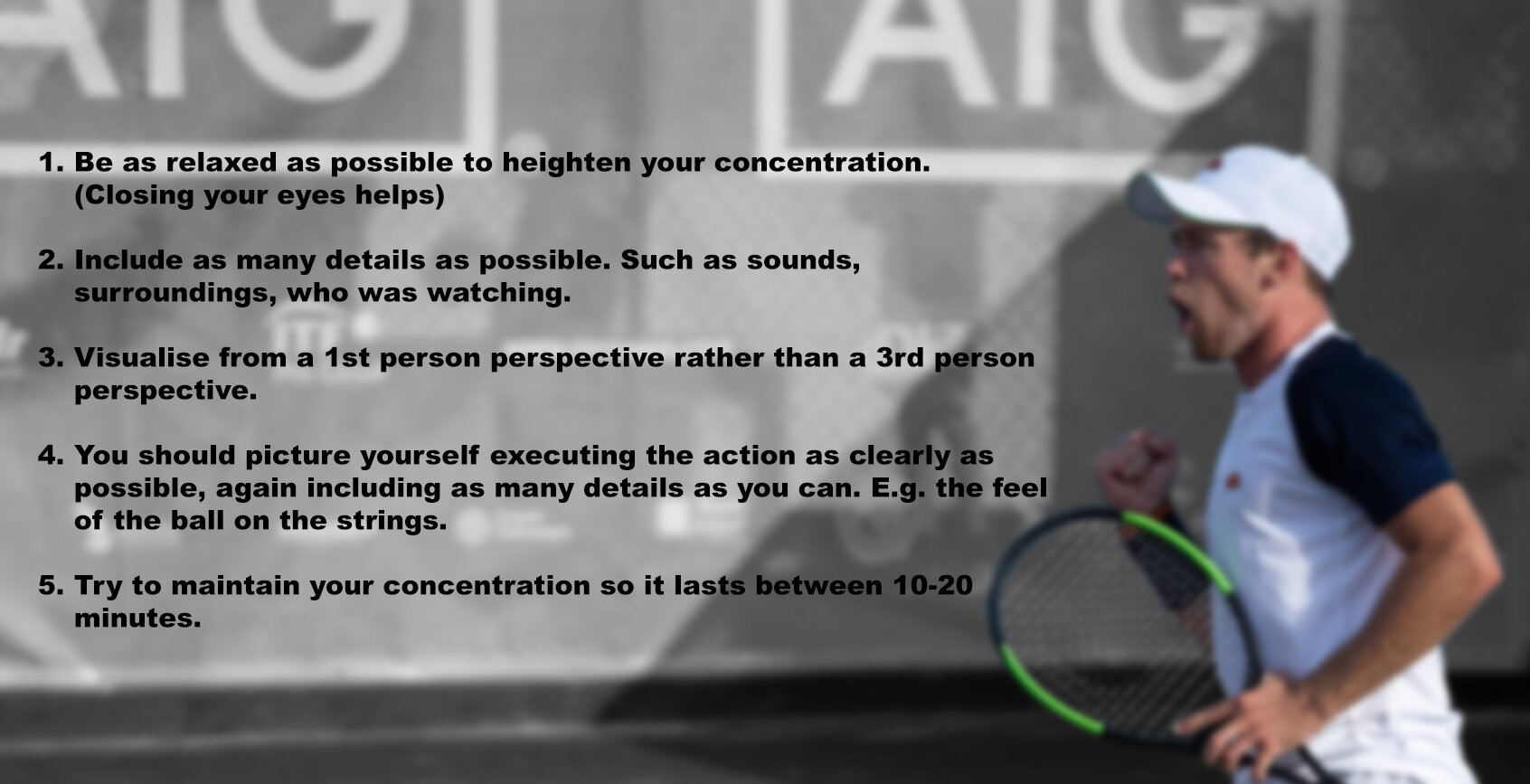Visualisation: Find Your Confidence
Guest Post by Peter Bothwell
In the 6-months leading up to February, I went through a really bad time on the match court. I was on a 14-match losing streak and I couldn’t handle the pressure anymore. I was at the point where I was even considering quitting. Every time I stepped on the match court I wanted to win so badly, but as soon as I went down or the match got tight I would think back to the match I lost before and would lose my head again and again. Something needed to change. It was at that point that I started meeting with a mentor who introduced me to visualisation.
How many of you have ever used visualisation before? Until recently, I had never used it. I never even considered using it. I just didn’t really believe in it. But, in the book ‘The Best Tennis of Your Life’, Jeff Greenwald mentions that in one study roughly 96% of all Olympic athletes said they used visualisation as a way to prepare for the Olympic Games.
Athlete Visualisation Numbers
My immediate thought was, “if everyone at the top of their sport is using it, why the hell am I not?” So, I decided to give it a go. Similar to writing this blog I had to get out of my comfort zone. So, I started to take 5 minutes each morning to picture myself playing great tennis.
Using Visualisation in Portugal
Several weeks later, with a fresh mentality and a new tool that would hopefully get me over this losing streak, I travelled to compete in Portugal. First tournament, I drew the number 1 seed first round. Good draw, right? Anyway, the day of my singles match I took 5-10 minutes before I went on court to visualise how I wanted to play, what shots I was going to use, how I wanted to act on the court and how I wanted to respond to challenging situations that could potentially occur in the match.
Did this work? 100% Yes! Did I win the match? No, I lost 3+3 but I played a good match. My best performance in a while. The fact that I performed well without negative thoughts and feelings made me believe in the power of visualisation more and I decided to keep it as part of my routine.
Next tournament came along; was I thinking about the fact I lost 15 singles matches in a row? Not one bit! I was fully ready to compete and stick to the same routine of visualising how I wanted to perform before the match. I found myself 5-1 down in the 3rd set tie break, but I didn’t panic because I had imagined every scenario before the match. I won the next 6 points in a row and the losing streak finally ended. Relief!
If I hadn’t taken the time to visualise before this match, I firmly believe I would have lost. Visualising had brought up images of great performances from the past which consequently gave me more confidence in the present. I was still hitting the ball the same way but I knew my decision making was correct and I was able to be present for every point.
Remember the old phrase ‘a picture speaks a thousand words’? Sometimes it’s not always about hitting tennis balls; you can improve your game off the court as much as you can on the court. Be brave enough to get out of your comfort zone. Like I’ve been told many times, you need to step into uncomfortable situations to then make them comfortable.
How can you visualise?
Since we can’t get on court right now to improve our games, why not try visualisation? If you’re brave enough to give it a go, I’ll leave 5 simple steps below to follow from William Ralston’s ‘Playing Tennis Like A Pro’:
Thank you for reading my first blog, I hope you enjoyed it. I’m certainly going to continue to use visualisation in my daily routine, and I’d highly recommend that you do too. Big thanks to Ev for getting me out of my comfort zone.
About Pete
Pete is a good friend who trains with me at SotoTennis Academy in Spain. Pete is a 24-year-old Irish Davis Cup player who’s achieved career highs of 602 ATP in singles and 447 ATP in doubles. He’s claimed an M25 Singles Title and 8 ITF Doubles Titles.
Follow Pete on Instagram and Twitter by clicking the social icons below.
Free Guide to Mental Toughness
If you’re interested in furthering your knowledge about the mental game of tennis, I created a 20-page PDF Guide that will help you on your path to becoming a mentally tough competitor. It’s absolutely FREE to download.





